Precision Feeding of Trace Minerals: Unlocking the Full Potential of Rumen Function
- Sustainable precision farming
Precision feeding in ruminants has always been a challenge due to the complex nature of the rumen. As a highly dynamic microbial ecosystem, the rumen plays a critical role in nutrient digestion and absorption, making it difficult to fine-tune feeding strategies without disrupting this delicate balance. Although the industry has made notable strides in optimizing ruminant nutrition, there remains room for further improvement.
Traditionally, trace minerals such as copper, zinc, and manganese have been viewed mainly as nutrients to meet minimum dietary requirements. However, recent discoveries have shifted this perspective. It is no longer just the quantity of trace minerals that matters - the source and bioavailability of these elements can dramatically influence animal health, performance, and environmental sustainability.
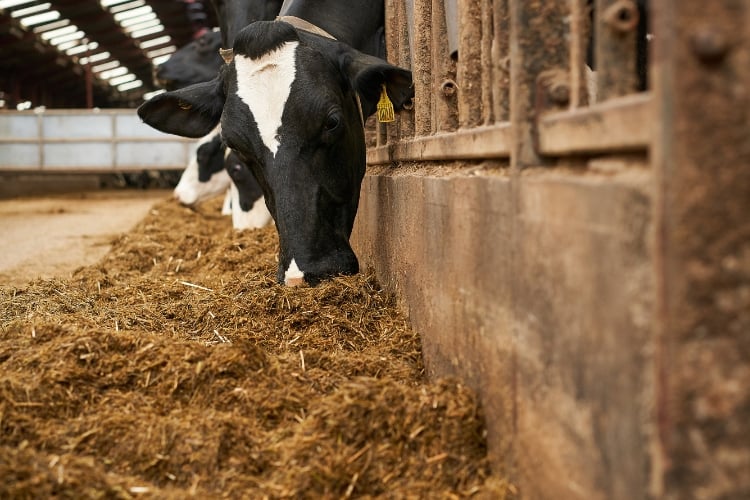
Inorganic trace minerals such as sulfates have been widely used in dairy rations, but mounting evidence highlights their limitations and unintended consequences. For example, a study comparing 45 ppm copper sulfate with 45 ppm IntelliBond C (a hydroxy trace mineral source) found a 25% loss of vitamin A in feeds containing copper sulfate.
Moreover, sulfate-based minerals are known to cause oxidation of fats in common feed ingredients, such as soybean meal, DGS, or rapeseed meal. This oxidation forces dietary vitamin E to act as an antioxidant, reducing its availability to the animal and potentially impacting immune function and performance.
In a series of reaction studies, IntelliBond C consistently outperformed copper sulfate in preserving the stability of key vitamins A, E, riboflavin, within the feed, helping to maintain their nutritional value throughout storage. In addition, feeds with hydroxy trace mineral additives like IntelliBond showed reduced lipid oxidation and improved phytase activity.
But the negative effects of inorganic minerals extend far beyond feed stability issues. Due to their high solubility and ionic form, many inorganic minerals possess strong antimicrobial properties. While useful in certain applications, such as copper sulfate in footbaths to control hoof infections, these properties become problematic in ruminant feed. The rumens complex microbial ecosystem can be disrupted by antimicrobial minerals, such as copper sulphate, reducing fermentation efficiency and slowing fibre and organic matter digestion. This limits energy availability, microbial protein production and therefore negatively affects milk production, growth, and overall health.
Hydroxy Trace Minerals: A Game-Changer for Dairy Nutrition
Hydroxy trace minerals, like those in the Selko IntelliBond range, offer a compelling alternative. Their unique crystalline structure provides low solubility in the rumen and high bioavailability in the intestine. This allows them to bypass negative rumen interactions while delivering essential nutrients more efficiently.
Recent research from Fermentrics Technologies, Inc. demonstrated the superior performance of IntelliBond sources of zinc and manganese in promoting apparent microbial biomass production (aMBP), a key indicator of rumen health and efficiency (Figure 1). Previous studies showed that replacing zinc sulfate with IntelliBond Z at 90 ppm improved volatile fatty acid production from 62mM to 90mM - an essential energy source for dairy cows.
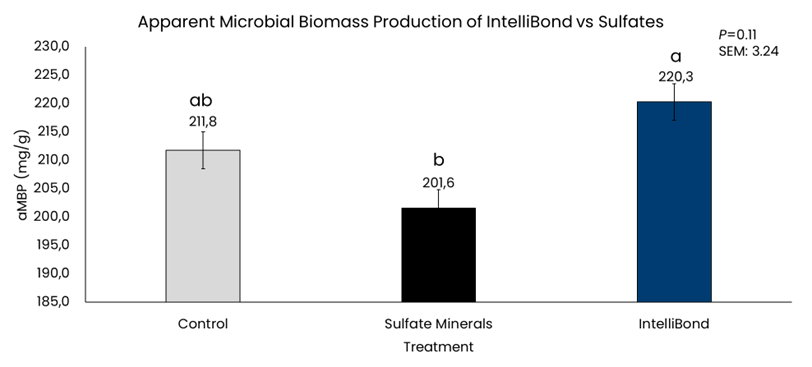
Figure 1.
In terms of fiber digestibility, hydroxy trace minerals consistently outperform their inorganic counterparts. In a meta-analysis of 10 studies, switching to hydroxy sources increased neutral detergent fiber (NDF) digestibility by 3 to 4 percentage points. According to research from Michigan State University, every 1% increase in NDF digestibility can translate to 250 grams more 4% fat-corrected milk per cow per day. This means up to 1 additional kilogram of milk daily during transition and peak lactation simply by changing the mineral source. This was confirmed in the latest findings shared by Professor Jose Santos from the University of Florida, where his research group observed that average energy-corrected milk (ECM) production over a 105-day period was approximately 1.5 kg higher per day in the group supplemented with Selko IntelliBond (Figure 2).
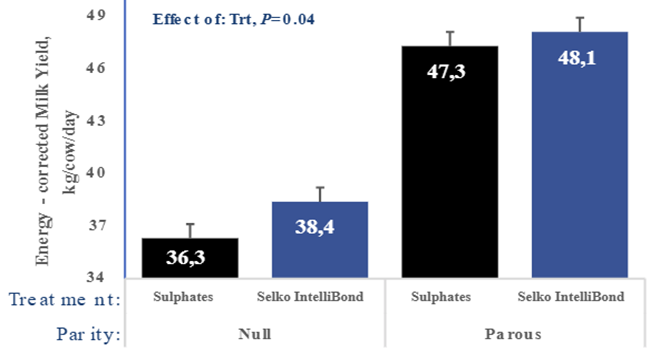
Figure 2.
Beyond production, improved mineral absorption from hydroxy trace minerals may also have positive implications for reproduction, one of the most critical factors in dairy herd profitability. A study conducted by U.C. Davis tracked cows receiving either hydroxy trace minerals (IntelliBond) or a combination of inorganic and organic trace minerals for 10 weeks immediately following calving. At 50 days in milk, cows were super-ovulated, and embryos were collected at 65 days in milk. The results showed a significant increase in the number of high-quality embryos from cows receiving the hydroxy trace mineral treatment compared to those on other mineral sources. This suggests that precision feeding with hydroxy minerals can enhance reproductive efficiency in high-producing dairy cows.
While hydroxy trace minerals as a category offer clear advantages over inorganic sources, IntelliBond distinguishes itself through its unique chemical structure and manufacturing process, being the original hydroxy trace mineral. Unlike some hydroxy minerals that may vary in particle size and stability, IntelliBond utilizes a patented crystalline hydroxy complex known as OptiSize™ technology, which delivers enhanced stability, improved bioavailability, and precise targeted release in the intestines. These advantages were clearly demonstrated in an recent in vitro fermentation trial that compared multiple trace mineral sources, including other hydroxy minerals, where IntelliBond showed significantly greater organic matter disappearance and microbial biomass production (Figure 3).
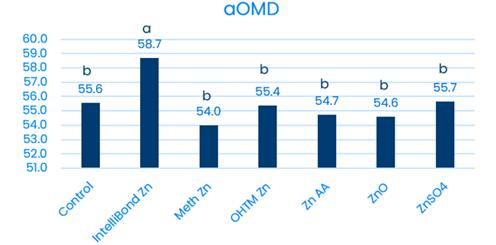
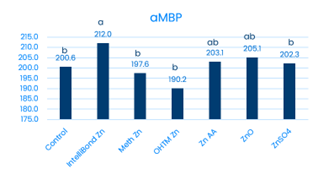
Figure 3.
Precision Feeding for Sustainable Dairy Farming
For dairy operations striving for better productivity, health, and sustainability, the importance of “right nutrient, right source, right time” has never been more critical. Precision feeding with high-quality trace mineral sources supports not only animal performance but also cost-effectiveness and environmental stewardship.
Trouw Nutrition and its Selko brand are leading the charge in redefining how the dairy industry approaches trace mineral nutrition. By investing in robust research and practical applications of hydroxy trace minerals, they are helping producers achieve more from their herds while reducing the environmental footprint of dairy farming.
Conclusion
Precision feeding of trace minerals isn’t just about ticking off nutritional boxes anymore. It’s about choosing the right source to keep the rumen healthy, improve feed efficiency, reduce waste, and help cows perform at their best – day in and day out. Selko IntelliBond trace minerals - are not just additives; they are strategic tools in the quest for more efficient, sustainable, and profitable dairy production.
Catalin Necula, DVM, PhD, Technical Sales Manager, Ruminants, Trouw Nutrition ECA